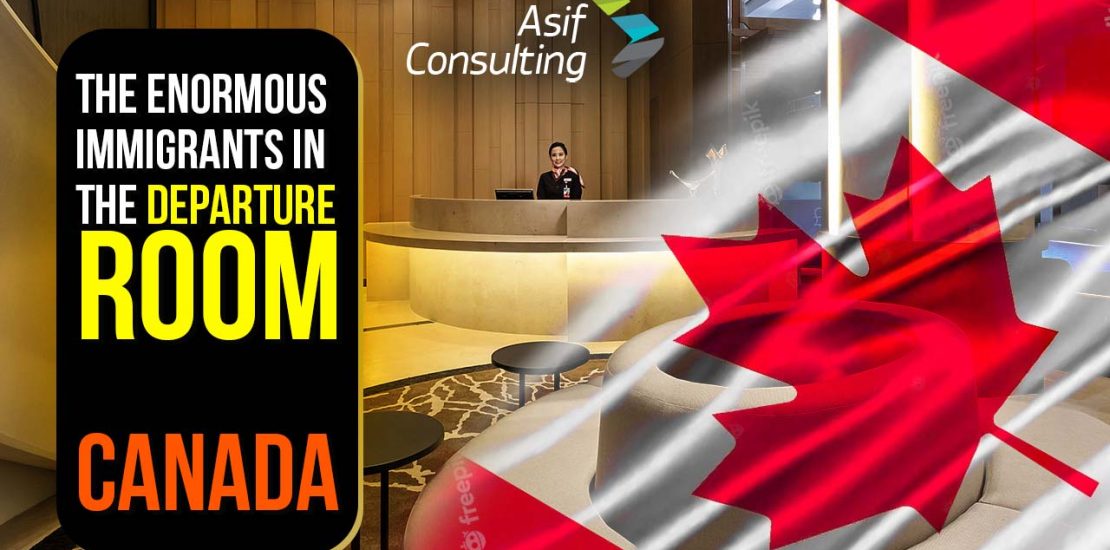Canadian Immigration , The Enormous Immigrants in the Departure Room.
- February 20, 2023
- Posted by: ASIFCONSULTING
- Category: News Update

Canadian immigration requirements for Pakistan The climate towards immigrants can be hostile; however, they may help with labor shortages. There are four ways to improve our national strategy.
Up from roughly one million in the immigration projections for 2020–22, the federal government says it intends to welcome nearly 1.5 million new permanent residents between 2023 and 2025. Apart from the economic advantages of more Canadian immigration requirements for Pakistan, racism, and discrimination against “visible minorities,” which is jargon for non-white immigrants, remain a significant issue with which Canada is currently ill-prepared to deal.
ALERTS, ACTIVITIES, AND MORE FROM TYEE AND SELECT PARTNERS Observe
Observe Black History Month and look forward to Black Futures
With these four selections for poetry, non-fiction, and theater, engage with compelling memoir and literary excellence.
In many ways, this divergence is becoming glaringly clear. For instance, it is hard to analyze the rise in immigration without considering how regressive legislation and regulations, like Quebec’s Bill 96, affect new immigrants.
Readers like you support The Tyee.
Grow Canadian independent media with us.
Racism has an impact on both our social interactions and our economic reliance on immigrants. The way that Canada has dealt with immigration has been to see it as a labor source. Tensions will inevitably arise as a result of that strategy over time.
Racism also refers to the way we handle immigrants and refugees. Several incidents have demonstrated how Afghan refugees continue to get distinct treatment from Ukrainian refugees by the government. Racism is more than just an organizational problem if Canada chooses to discriminate against significantly at-risk groups like refugees fleeing war and death based on—it can be inferred—their race or religion. In our society, it is pervasive.
For instance, the federal government’s concern that racism and violence against colored populations are normalizing is shown in Canada’s recent appointment of a representative to oppose the rise in Islamophobia. But it does not address the country’s historical bigotry against its founding citizens.
First of all, the terminology used to discuss immigration to Canada needs to be changed. Ottawa needs to start treating Canadian immigration requirements for Pakistan and immigrants differently as a labor supply issue. It’s not a numbers game; immigration is a human right. It must benefit both the migrant and the receiving nation.
Second, immigration is never solely a business decision. Regular immigrants also make an effort to flee political unrest, prejudice, and conflict in their nations. This is crucial to keep in mind while determining each immigrant’s eligibility and potential outside of just their financial capabilities.
Last but not least, any immigration strategy must include measures to not only economically compensate immigrants but also socially protect them. As a nation that prides itself on being multicultural, immigration policy must take addressing racism and racial relations seriously.
Canadian immigration requirements for Pakistan cannot be limited to reaching goals and numbers. This is not a factory opportunity. In the end, we are working with people and families who have their dreams and ambitions for Canada. The last thing somebody looking to start a new life in a new country wants is for racial discrimination to undermine their expectations.
How can we assist you?
We as Immigration Consultants are always here to guide our worthy clients regarding their Immigration and travel queries. We as Canadian immigration consultants will update you with the latest rules and regulations. So stay connected with us.
Our expert immigration consultants will help you out with consulting services, global citizenship, business immigration, skilled immigration, study visas, visit visas, and scholarships. Stay in touch with us to get the latest updates about the immigration process.
Contact us at 051-8314775 or +923338888470 for better consultation.

… [Trackback]
[…] Read More Information here to that Topic: asifconsulting.pk/canadian-immigration-the-enormous-immigrants-in-the-departure-room/ […]